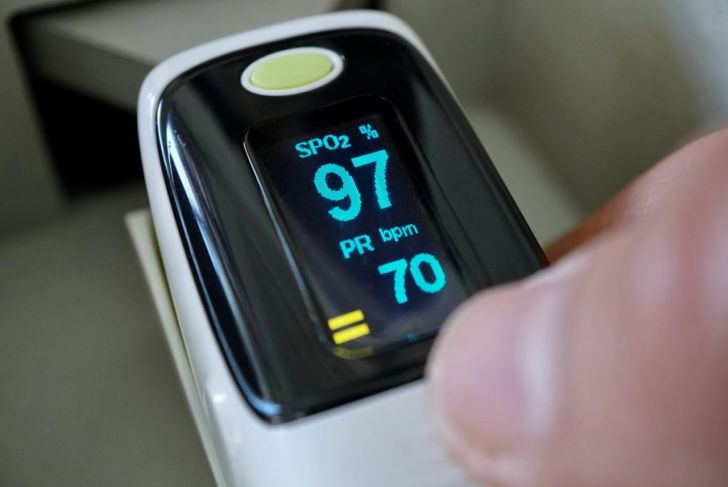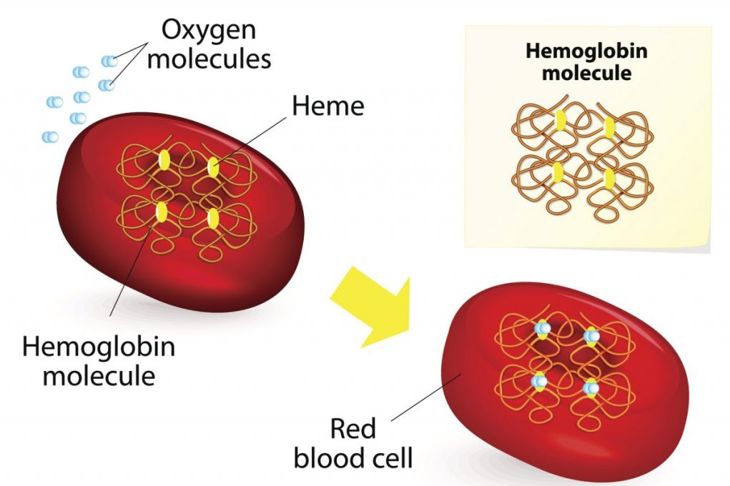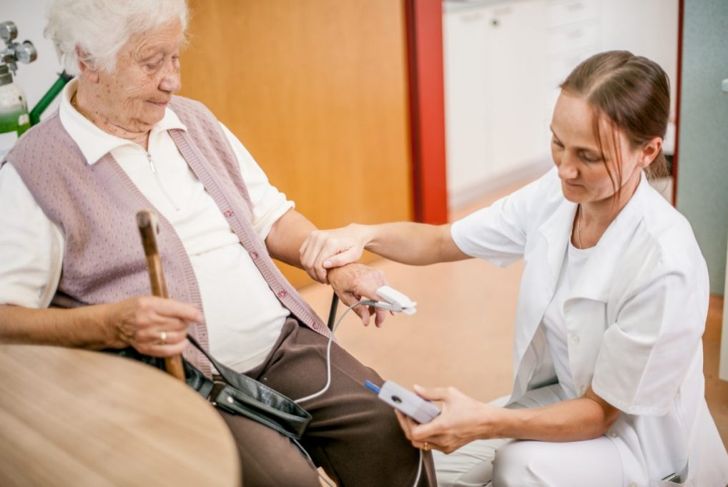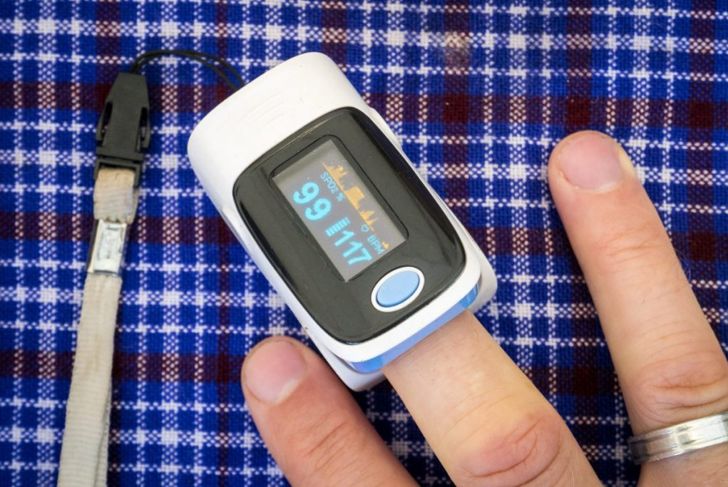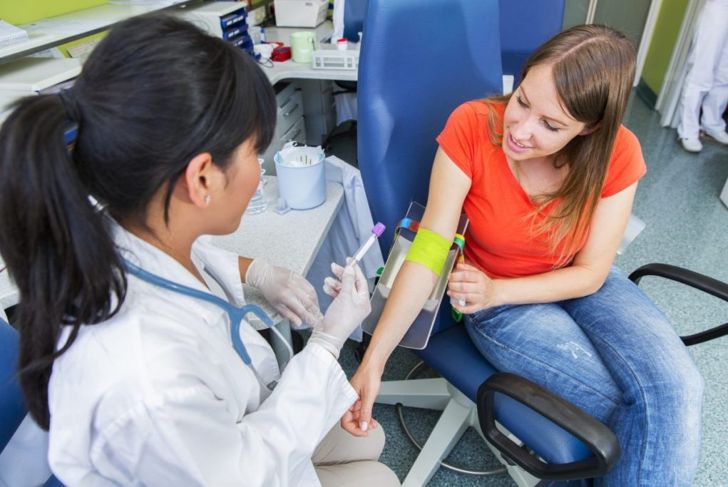Quickly measured without a blood draw, pulse oximetry or SpO2 indicates the estimated oxygen saturation of red blood cells. It is an indirect measure, calculated through a clip-on fingertip device that uses visible and infrared light. The SpO2 value, expressed as a percentage, helps clinicians understand how the body is using oxygen once it has been inhaled. A quick check of this value can help clinic and home care personnel understand how well a patient is breathing, and aid a primary care doctor in identifying lung problems and other conditions during routine visits.
How SpO2 is measured
The doctor will clip a measurement device onto a fingertip. The device will then shine light through the finger and measure the light received on the other side. Measurement depends on the patient having normal red blood cells and normal, clean fingernails. Abnormal hemoglobin in the blood and nail polish can disrupt the measurement. When the measurement is complete, the device will display both a percentage value for SpO2 and a pulse value in beats per minute.
What the SpO2 number represents
Red blood cells contain hemoglobin, which transports oxygen from the lungs. Arterial blood from the lungs is bright red because it carries oxygen, while venous blood returning to receive more oxygen is a darker red. The pulse oximeter uses this difference, along with the fact that arterial blood flows with a pulsating pattern, to calculate oxygen saturation. The higher the percentage displayed on the device, the more oxygen the blood is carrying to the body.
Normal SpO2 values
Typical SpO2 values range from 94 to 99 percent. Results from the pulse oximeter can vary due to the location from which the measurement is taken, and sometimes another finger will be used to confirm the results before they are recorded. Variations in the value can indicate pulmonary or cardiac issues or the onset of the common cold or pneumonia. A SpO2 value below 90 percent can indicate acute respiratory failure and the patient may require supplemental oxygen. A variation of 3-4% from the usual value recorded for a patient is cause for further investigation.
Effect of rising altitude on SpO2
The reduced amount of oxygen in the air at higher altitudes affects SpO2 measurements. A patient with a normal 98% value at sea level may have a measurement of 95% at 5,000 feet, and as low as 90% at 10,000 feet. Though the altitude change likely explains the measurement, the reduced oxygen levels are still a concern. Below about 80%, symptoms of hypoxia, such as disorientation, may occur.
SpO2 in lung and respiratory conditions
It is common practice to record SpO2 values at each doctor visit to establish a baseline value specific to the patient and to watch for any sudden changes in oxygen saturation. While some changes may indicate a transient infection such as a cold or pneumonia, they could also point to conditions such as COPD and other lung conditions, certain heart conditions, and issues with the hemoglobin’s ability to transport oxygen.
Diagnostic uses of SpO2
Pulse oximetry is a quick way to check blood oxygen saturation, and clinicians can order laboratory blood gas tests to explore any unexpected SpO2 values further. A deviation from the patient’s usual range can prompt diagnostic investigation of heart- and lung-related illnesses. Changes in SpO2 during exercise can help a physician understand oxygen use in a patient’s body, and drops in this value during sleep or eating can identify sleep apnea and dysphagia.
Normal changes of SpO2 in aging
Healthy seniors can still have a normal oxygen saturation value. SpO2 values reflect the state of processes within the body that may change with age, but an infant with health concerns can have a lower value and a healthy senior a normal value — it depends on how the lungs, heart, and blood are working together. Because many relevant conditions arise more commonly in seniors, home health services and clinics pay particular attention to oxygen saturation for initial indication of potential concerns.
Treatments for low SpO2
Treatment for low oxygen saturation percentages involves addressing underlying causes and providing supplemental oxygen, if necessary. For low values at higher altitudes, both supplemental oxygen and relocation to a lower altitude can address the problem. For respiratory issues, a doctor may prescribe medications that help improve lung function. Heart- and blood-related issues will also be treated to improve the vital systems that transport oxygen throughout the body.
Reading SpO2 with a fingertip pulse oximeter
Pulse oximeters are available at retail pharmacies and can be used at home, or a physician may prescribe one for self-monitoring. Using them is simple: first, select a location that is clean and healthy. Next, place the clip on the finger and press the button to begin the test. A red light should be visible from inside the device. When testing is complete, record the pulse and SpO2 values on the readout. If the test reports an error, make sure the patient is staying still and in a quiet environment, then repeat the process.
Fingertip SpO2 versus blood SaO2 value
A value similar to SpO2 is reported in lab results as SaO2. This measurement of oxygen saturation is made using a laboratory blood test called an arterial blood gas test. Under normal conditions, including a healthy fingertip for SpO2 measurement, the two values should be comparable. Arterial blood gas lab results often include other information about oxygen and carbon dioxide in the blood, which may be more helpful for diagnosis and treatment.

 Home
Home Health
Health Diet & Nutrition
Diet & Nutrition Living Well
Living Well More
More